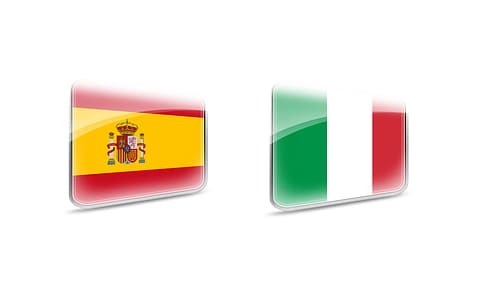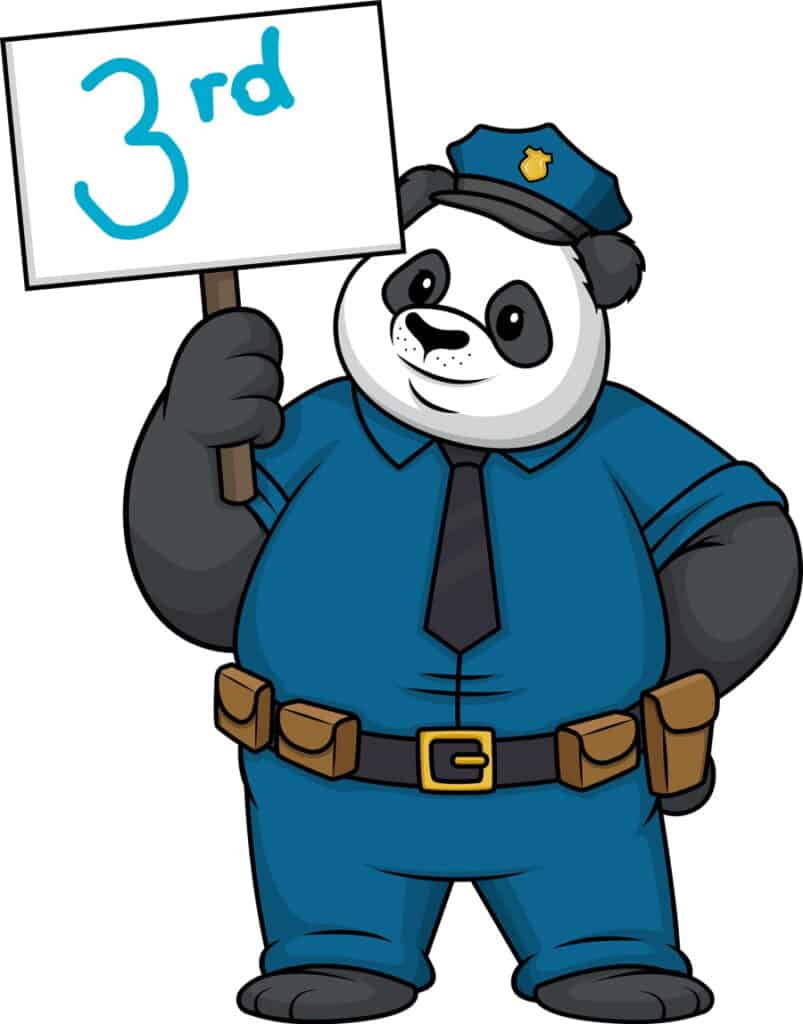
It’s daunting for any adult to take on the task of learning a new language. It of course is doubly daunting to try two new languages at the same time. Heck, most people can’t handle reading two books at the same time!
Spanish and Italian can be learned together, but there are some ways to make it easier. The languages should be staggered by starting one a little before the other for less chance of confusion between the levels. Also, a consistent plan of study is needed to make success more likely.
Research also supports that learning two languages at the same time is possible without loss in retaining information long term. (Source: Nature Reviews Neuroscience, 2014). Since Spanish and Italian both are considered Romance languages, they actually make a perfect pair to learn together. If you find yourself so inclined, read on to learn more about this interesting challenge!
Contents
- 1 First Step: Decide Which To Start And Which To Delay A Bit
- 2 Second: Establish a Daily Schedule for Spanish and Italian
- 3 Third: Switch Between Spanish and Italian Frequently
- 4 Fourth: Have Conversations With Natives In Each Language
- 5 Fifth: Have Patience; Pace Yourself
- 6 Sixth: Learn A Language Using Another Learned Language
- 7 Seventh: Make Daily Activities Bonus Time for Spanish and Italian
- 8 Eighth: News Junkies Take Note – Consume Your Infotainment in Spanish and Italian
- 9 The Final Talking Point on Learning Spanish and Italian at the Same Time
First Step: Decide Which To Start And Which To Delay A Bit

It may seem the opposite of the intention to say first learn one, then the other, but let me elaborate.
It isn’t productive to really do two languages precisely at once- no on expects you to study 10 Spanish flashcards and then immediately turn to study 10 Italian cards. That could certainly lead to whiplash!
What is meant is that you pick one to begin as your main language to target. You will actually spend more time on this languag too, though you’ll still spend time on the secondary language (don’t worry!).
This is necessary to avoid confusion of the two languages. In the case of Spanish and Italian this is a real possibility. These languages are notoriously similar.
This means that learning them with exact synchronism is more difficult, but if one is a few levels in front of the other, it actually helps learn the other.
Both Spanish and Italian are Latin-derived romance languages, so confusion is likely to happen as there will be quite a few similarities.
Eventually, the similarities will work for your benefit, with one helping you learn the other. But in the beginning, this can be a drawback, making it important, again, to start one first as your primary.
As well, it’s unrealistic to think you’ll spend the same amount of time on both, so make a decision of which will be your primary.
Now, you may find yourself in a conundrum trying to pick one over the other. After all, your interests in Spanish and Italian is what brought you to studying them both, right?
To make this choice easier, I suggest you do the free trials from Rocket Languages. I listed the links below. These are programs I have used with students, as well as programs my family has used in their language endeavors. I highly recommend them.
Since they’re free, the stakes are low, but it will give you a dip in the pool, so to speak. Then you can make an informed choice.
Click here to sign up for a free trial for Spanish from Rocket Languages.
Click here to sign up for a free trail for Rocket Italian.
Importance of Cognate Background for Spanish and Italian
Cognates are words from two or more languages that have similar sounds and meanings.
Spanish and Italian are known as cognate languages because of their ancestral connection.
Some examples of Spanish & Italian cognates:
- Anger- la cólera in Spanish and la collera in Italian
- Appetite- el apetito in Spanish and l’appetito in Italian
- Friend- el amigo in Spanish and l’amico in Italian
- Life- la vida in Spanish and la vita in Italian
- Memory- la memoria in both
- Number- el número in Spanish and il numero in Italian
It might seem like this is a bonus, and in the long term, it certainly can be. However, in the beginning stages, it will get confusing that the words are so similar and mixing them up is inevitable.
It’s not a huge problem in and of itself, but learning a new language is already challenging. Adding one more little way for you to make mistakes…well, let’s just say if it can be avoided by staggering your learning and delineating one language primary and the other secondary, that is the better option.
Sometimes different pronunciations, accent marks, and spellings cause them to be just contrasting enough to make it near impossible to separate for the new learner. This again is what is behind the reasoning for choosing a main target language and the minor language to learn-in the initial period.
Start Your Preferred Language First

After choosing your preferred language, you will start it first. This will keep the stages of learning clearer for you, separating the languages in this way.
Scheduling your plan for learning the languages in a staggered fashion will reduce your frustration level and let’s face it, that’s going to be muy/molto importante. (Side Note: importante is an English-Spanish-Italian cognate that we borrowed and they share.)
Most languages have similar places to begin. A student will learn sounds, and then move on to put those into combinations, and common words. Familiar grammar concepts and high-use or common word lists are generally places to start in learning almost any language.
Just think about starting anything- you always begin with the most common, or easiest parts and then work your way up to more complex material. Well, the process for learning a language isn’t much different.
Now, with this in mind, you can see that you’d be learning the same sorts of words, phrases, and grammar in both Spanish and Italian, thus it should be clear how that could get confused at times. You don’t want to start off ‘mixed up’, so to minimize that from happening, you’ll start with one first, then the other.
Should I Learn Spanish or Italian First?

How do you decide between two great choices as your starting point: Spanish or Italian?
One way to help you is to think which language is similar to your native language. If that being English, then which language seems most similar to your personal understanding or connection to English.
Spanish or Italian first? Other Important Considerations
What Is Your Reasoning Behind Learning Other Languages?
Think about your initial attraction to both languages. What is it that caused you to gravitate to Spanish and Italian?
Do you have an affinity to Italian movie stars or always wanted to visit Roma? Maybe you just love Italian food and would find it exciting to order your favorite dishes in Italiano? It could be that your grandmother was born in Italy and family heritage is your link.
Maybe you live in an area of the US where Spanish is common and you’d like to be able to use it with your neighbors. Or maybe learning Spanish would benefit you professionally?
These are the kinds of questions to ask yourself in order to guide you to select one language over the other. Working as a public school teacher in East Los Angeles, it would make much more sense for me to be fluent in Spanish first and then Italian. Which is a better choice for your personal situation?
Is Spanish or Italian Simpler for Those That Speak Only English?
If you are wondering which one is easier, language-wise, they are about the same, being derived both from Latin as part of the Romance language group.
However, Spanish is by far more popular as it’s the fourth most spoken language in the world and the number one most studied language in the US for a second language.
On the flipside, Italy is the 20th most spoken language in the world and almost all Italian speakers live in, yes, you guessed it, Italy!
You’ll find it much, much easier to study Spanish in the practical sense, though. You will find many more speakers of Spanish to practice with, and many places to use your Spanish professionally.
Yet, there is a draw to learning Italian if you live in New York or New Jersey, states with the highest number of Italian speakers in the U.S. As well, if you are Catholic, you may be drawn to the official language Vatican City.
Truly, just ask yourself what is your motivation to learning both languages in the first place and that should help you narrow it down. Obviously, you have reasons for both, but I imagine when you seriously think about it, one is going to be stronger than the other when you think of your ‘whys.’
When it comes down to it, the one that most motivates you will be the one that is easier for you to learn.
Second: Establish a Daily Schedule for Spanish and Italian

Tip #2: You need to create a schedule for your language learning and make it a routine.
This means you need to figure out how much time you have to devote, keeping in mind your expectations of fluency (do you have years to learn or are you needing to be able to converse in one or both languages in six months?), and then map out your schedule.
I, personally, like to write things down in a daily planner, and of course, check them off as I go for that sense of little accomplishments. Here’s one of my favorite daily planners from Amazon, but really, anything that works for you is fine.
I think it is important though to have something specific for just language learning- it keeps it special that way. Of course, you can use Google Calendar or something like that, too. The main thing is that you have a schedule!
As a teacher, I’ve always told my students to study 15-30 minutes per day rather than several hours 1-2 days per week. Evidence tells us you will retain more and make faster progress overall.
Now this assumes you are studying in a quality manner and that you are giving your full effort as you do. Just going through the motions or not using materials that are engaging to you won’t be effective no matter how long you devote.
Once you create your language learning schedule, keep it consistent.
You are the master of your schedule, so design one that works for you.
Just because you know someone who learned Italian as he ran 20 minutes on the treadmill every morning and Spanish after work on his hour long commute, doesn’t mean that’s the schedule for you. Maybe you aren’t a morning person and don’t have a long commute (maybe you aren’t a treadmill person, either, for that matter!).
Figure out what works for you. You may prefer to study Spanish on your half hour lunch break every day instead of eating with the co-workers and practice Italian 15 minutes after dinner each evening.
I don’t necessarily recommend it, but you could alternate your weeks of language learning, too. Italian one week; Spanish the next. Spanish during the weekdays and Italian only on the weekends.
The key here is to make it work for you because that’s what really matters. If the plan doesn’t fit your life style, it won’t lead to success.
And if you find out that this is the case for you, then feel free to change it! As I teacher, I made frequent adjustments to my schedule for supporting students. In fact, I probably changed things up every 6-8 weeks.
One problem I have seen in my journey as a language teacher is when students feel they have to make up for missed time. It’s inevitable that you’ll get behind at some point.
However, when this happens, just get back on track. Trying to make up lost time will just cause you to overwork yourself and maybe start to resent your languages.
Third: Switch Between Spanish and Italian Frequently

Even with staggering your languages, you may find that you are still getting your languages mixed up at times. If that happens, alternating them-or purposefully mixing them up- might help. Sort of like facing your obstacles head on!
- Mix up your Spanish and Italian flash cards to trick your brain into learning the difference. You will develop the ability to switch from one language to the other by training it to do so. Here are some popular Italian and Spanish flashcards on Amazon.
- Designate a Spanish day or an Italian day where you do everything in that language. Do the same thing for the other language the next day. I’ve written more about this here.
Your brain will have to get used to quickly switching from one language to the other, in the spur of the moment, as you learn two languages at once.
Although this will be challenging for you, training yourself to do this switching seamlessly will be a hugely beneficial skill, not only in learning Spanish and Italian, but also later if you choose to add other languages to your schedule.
You’ll also find as a bonus that this skill will help you with moving from your native English to Spanish and Italian, too. To learn more about how this affects your brain, check out this article in which I address language learning and IQ.
Fourth: Have Conversations With Natives In Each Language
There really is no substitute for using your Italian and Spanish on a regular basis. You can do this later in the process and try in the beginning to only collect vocabulary and usage, but the motivation from the start is to communicate.
This can be done from the very beginning. You will activate your language into usable speech either along the way or later. The energy that a good conversation in your target language will infuse into your learning is very valuable.
There are many ways you can find these speaking partners. You can live near people that speak the languages you want to learn, or they can be on the other side of the world. In todays digital communications environment, the possibilities are endless.
Below are some suggestions on how you can use your Spanish and Italian on a regular basis and have some fun, friendly conversations as well.
- Tutors are easy to find. You many not be able to find a tutor that can speak English, Italian, and Spanish. But who knows, you may be able to find just that. For one of the best resources online for language tutors, I recommend italki.
- Online forums and apps. Using popular sites like Twitter or Instagram can be a good option. There are apps that work well too like HelloTalk.
- There are also online foreign language classes. Though not a native speaker, many people find that learning through having conversations with other students can be a great way to boost your language learning.
- There could be active meetup groups in your area. Using the popular site Meetup.com can score you some free, regular, and fun group language meetings at local restaurants or coffee shops.
My husband along with our daughter met with several meetup groups and had online language partners for many years while learning German. One in particular became a family friend. Every Saturday morning for five years for instance was spent talking about current events, culture, and general happenings in everyone’s lives in German and English.

This led to several trips to the beautiful Bavarian city of Munich and many others to meet with him in person. This doesn’t happen with every language partner, but if you have a couple of them it definitely can be the case.

When Lex scored an exchange year scholarship to spend her senior year in Köln (Cologne), he became her emergency contact in country. Language is about people, not just about sounds and immediate meaning.
Fifth: Have Patience; Pace Yourself
Tip#5: Patience is key. Trying to rush any language learning process just leads to frustration. Do it with attempts to learn two languages at once, and you are heading for burnout quick. Learning takes time, and though there are ways to be more efficient, there is always a limit.
Daily practice in meaningful blocks of time that don’t exhaust your mind are much more effective than long grueling hours of study. You cannot speed up the process by sheer force of will. It has to be systematic and consistent.
Trying to run a marathon at a sprinters pace is a recipe for failure. Language learning is a distance race.

Trying to push yourself with overly long study sessions can do more harm than good. Here are some guidelines that can help you progress in Spanish and Italian even learning them at the same time.
- Do daily activities to learn that take only moderate amounts of time
- Stick to your schedule consistently
- Assess your knowledge periodically to measure progress
- Make slight changes to your schedule as needed
- Have patience and just don’t stop

Sixth: Learn A Language Using Another Learned Language
When we learn one language, not only do we learn to communicate in that way, we also learn more about ourselves. We find out how we best progress in the process and our brain develops connections it otherwise would not be able to make.
This is great news when learning a third language. Using the second language to learn a third has been a proven way to effectively take in all of the information faster and make it more comprehensible.
Let’s look at it more closely for Spanish and Italian.
- Let’s say you choose to learn Spanish first. Get to just above the basic levels first in that language.
- Then instead of starting with English and going to Italian, start learning Italian from what you know in Spanish. (Really, it’s a thing!)
- Study Spanish from English separately, but as you learn in Spanish take that and learn Italian.
There are two great benefits to learning languages at the same time this way. When you teach something, you make that information more concrete in your own mind. In this instance, you are almost teaching Spanish to yourself as you learn Italian.
There is also the added benefit of in this case Italian having no real connection to English or your native language. You learn Italian as Italian. It may sound strange, but it really works, though there is considerable effort to keep yourself pushing ahead.
Give it a try and you may be shocked at the results. Not everyone takes to this method, but there are many Polyglots that swear by it. Just like some people love using flashcards and others look for only new comprehensible input, they are doing the same thing only with different flavor.
This may just be your flavor!
Seventh: Make Daily Activities Bonus Time for Spanish and Italian
With digital learning and the prolific use of ‘screens’ in our everyday lives, it is no wonder that many have come up with ingenious ways to use them for a myriad of applications. If your goal is to learn a language, it makes sense to use the technology all around you to help.
You can easily use your devices, set to Spanish or Italian to reinforce what you have already learned and to introduce vocabulary specific to how they are used. It is free and only takes a bit of getting used to. My husband and daughter changed their computers, phones, etc. and it was a fun conversation piece when anyone else noticed.
This is passive learning that can happen throughout the day. It is not considered part of your scheduled study since your brain is not being forced into contemplating the language. You are simply immersing it in Spanish or Italian in order to ‘trick’ your brain into thinking these languages are important enough to remember.
Remember: Your brain is lazy and will only do what it thinks it has to do. It will simply ignore the things that it deems unimportant.
Let’s look at some ideas that can help you implement this.
- Change the language on your laptop or desktop computer
- Change the operating language of your tablet
- Set your phone’s internal language to either Spanish or Italian
- Set one of your devices to Italian and another to Spanish
- Do you like to play video games? Do you play more than one? Set one of the default languages to Spanish and another one to Italian.
- Watch Netflix or Amazon movies made, dubbed, or subtitled in your target language. (Read my article here on how to learn a language using this genius Netflix hack.)
So, put your brain on notice. Tell it what is important and don’t let it decide arbitrarily on its own. Keep Spanish and Italian in front of yourself and your brain will act accordingly.
Eighth: News Junkies Take Note – Consume Your Infotainment in Spanish and Italian

News is usually based on the most common vocabulary used by the most people that speak the language it uses. This is simply so that it can reach the most amounts of people with the information (and let’s be honest, so that more advertisers will pay them for spots.) The more people that tune in the more important the news organization becomes.
For those learning two languages at the same time like Spanish and Italian, this offers a unique opportunity. Many of these news stories will be covering the exact same topics. Though they will use different vocabulary and phrases, the subjects will be similar. That is valuable to the language learner.
There are Spanish news podcasts, programs, and publications. There are Italian ones that are talking and writing about nearly the exact same things. Those stories are what sell advertising space no matter the language, culture, or country.
Knowing the general subject and direction of the comprehensible input will go a long way in acquiring the vocabulary, phrases, and linguistic concepts they are using.
My husband and daughter used to use this very trick to learn German. They would listen to English news stories and then search for the same ones in German. It was rare that they couldn’t find it in both languages.
If they couldn’t find it in one of the languages, it was usually because the story was too regionally focused. Eventually, they could understand even those because of the repeated vocabulary used in most new cycles.
Want to start right now? Here are a couple of youtube news channels in each language. Dive in!
https://www.youtube.com/channel/UCoMWImnPAur6JhXDK63dpAg
https://www.youtube.com/user/euronewsit
The Final Talking Point on Learning Spanish and Italian at the Same Time
If you are adventurous and confident in your ability to push through obstacles, go for it. Learn Spanish and Italian together (staggered of course).
It will take dedication for sure, but you will be so happy you did a couple years from now. Speaking other languages can in some environments feel like a super power.
Remember that the journey is your own and those these tips can help you establish your path, there really is only you and the way ahead. There is not a one size fits all solution. You can do it, just make it your own.
Use these tips to help you on your way…
- Decide if Italian or Spanish will be your first to start.
- Get your daily schedule set and keep to it.
- Switch between Spanish and Italian regularly.
- Get some native speaking partners and get to gabbing.
- Be the turtle. Slow and steady wins the… well you know.
- Use your Spanish to learn Italian or your Italian to learn Spanish.
- Switch your digital world to either Italian or Spanish.
- Utilize those news program in both languages for something other than infotainment.
Keep on the path. It is like earning a black belt in a martial art. The ones that make it to black belt are simply the ones that didn’t quit.
More Sources
